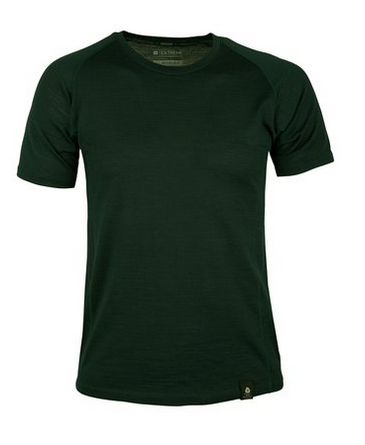Continuing from the last post on Boots and Socks under the preparedness principal of Shelter, working our way up the body looking at clothing layers considered for a wild camp trip in April.
I’ve already mentioned clothing layers, the purpose of this is to enable us to be able to remove layers as required to maintain a comfort as we progress on our trip, its no good having one very warm layer, e.g. coat, finding that wearing it makes you too hot and not wearing it makes you too cold. So layering into base, mid, main and waterproof will give you the flexibility to add and remove as necessary.
Base Layers
These are intended to be worn next to the skin and designed to be high wicking and quick drying. Wicking is where a thin layer of warm air is trapped against the body pulling sweat away from the skin.
There are 2 main types of fabrics used, Merino wool, or synthetic fabrics, personally I prefer Merino wool, it is however less effective at wicking sweat but is ideal for extreme cold conditions. Synthetics are lightweight and wicking alternative to merino, but are less efficient at resisting odour. However they do dry very quickly and also cost less than merino layer.
If you use a standard T shirt these are usually 100% cotton, the problem with cotton is that it soaks up sweat like as sponge and when it’s wet; it draws heat away from the body, which can cause hypothermia.
Two base layer tops should be taken, my choice would be a short and long sleeve top.
For the legs I would also look at a ‘long John’ style base layer in the same material, this can also double as a layer to sleep in to stay warm.
Mid Layers
 A lightweight fleece is an ideal mid layer, I have found the that the lower cost fleeces tend to not breathe too well and can make you sweat so its wise to get the best you can for what you can afford.
A lightweight fleece is an ideal mid layer, I have found the that the lower cost fleeces tend to not breathe too well and can make you sweat so its wise to get the best you can for what you can afford.
Waterproof Jacket
Lightweight, waterproof, windproof and a stiffened peak hood, are a few of the features that I have looked for for this.
Trousers
 Avoid Jeans or tracksuit bottoms and stick to walking trousers that you feel comfortable wearing, I have purchased many over the years but my favourite are still my first pair of Craghoppers.
Avoid Jeans or tracksuit bottoms and stick to walking trousers that you feel comfortable wearing, I have purchased many over the years but my favourite are still my first pair of Craghoppers.
I haven’t tested mine yet but for these I have opted for Goretex military over trousers, these zip down and up the leg completely for ease of access and are MVP (Moisture Vapour Permeable) light weight, rain trousers.
The fact that they are genuine British army Issue gives me some confidence in their quality. These can be picked up at great prices
- Elasticated waist with toggle draw cord.
- Adjustable Velcro ankles.
- Rip stop material.
- Closed zips to prevent water and debris entering.
Additionally Gaiters can be used to help seal the gap between your boot and trousers in wetland areas.
Hats and gloves should always be considered for colder climates and altitude, personally I would always take these with me as you can never be sure of the weather turning.
Next time we will consider Sleeping as a part of Shelter.



Another great article, Ian! Thanks!
LikeLike
Pingback: Wild Camping – Applying Preparedness Principles – part 4, Sleeping | Prepare to Survive
I would add fine knitted silk as a base layer, it’s smell free, itch free (even merino wool itches to some extent for some people) and can be thrown through a hot wash in the washing machine unlike most man-made thermal undies. The cost is about the same as good quality merino and it weighs about half.
LikeLike
Thanks for your addition, I can’t comment on the kniited silk as I’ve never tried it, but your comments are welcome.
LikeLike